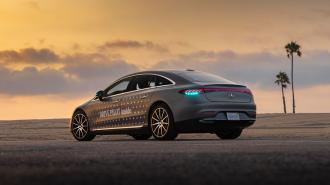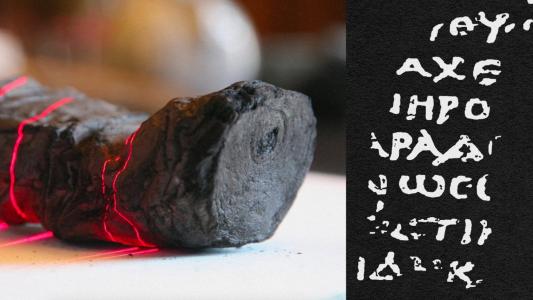Mercedes-Benz has secured permission to add turquoise lights to the exterior of its self-driving vehicles to indicate to others that an autonomous driving system is in control of the car.
“With the development of automated driving marker lights, Mercedes-Benz is once again setting new industry standards,” said Markus Schäfer, Mercedes-Benz’s CTO. “We are the first automaker in the world to receive such approvals in the US.”
The background: The Society of Automobile Engineers (SAE) classifies cars’ autonomous driving capabilities in six levels, ranging from Level 0 (a car with no autonomous capabilities) to Level 5 (a car that can be fully autonomous under any driving conditions).
In January 2023, Mercedes-Benz became the first automaker to get a Level 3 autonomous driving system approved for use anywhere in the US. At that level, the car drives itself under certain conditions, and while the driver must be ready to take control of the car, they don’t need to keep their eyes on the road at all times.
The challenge: While this autonomous driving system, called Drive Pilot, can make driving less stressful for Benz owners, it may cause stress for other drivers — from their perspective, it might look like someone is distracted when they should be paying attention to the road.
The same is true for police officers — they have no way of knowing that the driver they see playing on their phone or knitting a sweater while behind the wheel is legally (and safely) able to do so.
More generally, making sure that autonomous vehicles and other drivers’ expectations are on the same page is going to be key to making sure they get along while sharing the same roads.
What’s new? Regulators in Nevada and California — the states where Drive Pilot is currently approved — have now given Mercedes-Benz permission to equip its vehicles with special turquoise marker lights that let others know when the autonomous driving system is engaged.
“The inclusion of marker lights is poised to substantially enhance public acceptance of automated driving and contribute to road safety, as the lights clearly visualize the automated driving system’s status on the exterior,” writes Mercedes-Benz.
“The more automated driving vehicles populate the road, the more important communication and interaction between the vehicle and the environment become.”
Markus Schäfer
In California, the company had obtained a permit to integrate the turquoise lights into the outside mirrors and front and rear lights on testing vehicles — that permission is set to expire after two years.
In Nevada, meanwhile, it has permission to integrate the lights into its 2026 production vehicles. That permission will expire if/when the state enacts new laws dictating how automakers should indicate that an autonomous driving system is engaged.
Looking ahead: Mercedes-Benz owners are currently only allowed to use Drive Pilot during the day on specific highways in California and Nevada when heavy traffic has the car traveling at speeds below 40 mph — basically automating stop-go highway congestion.
The company plans to continue expanding where and how its autonomous driving system can be used in the future, though, and the addition of the turquoise lights to its vehicles could help ensure the expansion goes smoothly.
“The more automated driving vehicles populate the road, the more important communication and interaction between the vehicle and the environment become,” said Schäfer.
We’d love to hear from you! If you have a comment about this article or if you have a tip for a future Freethink story, please email us at [email protected].






